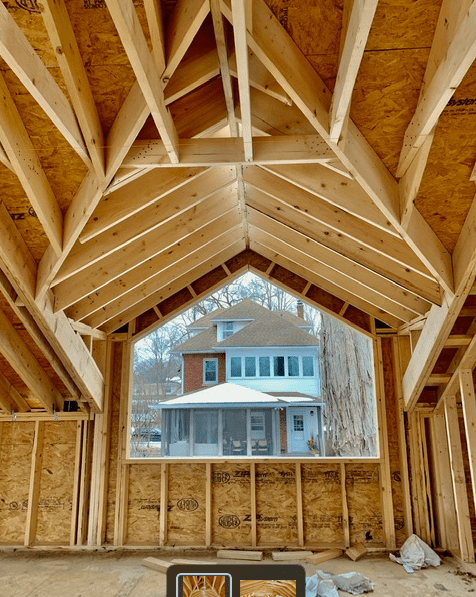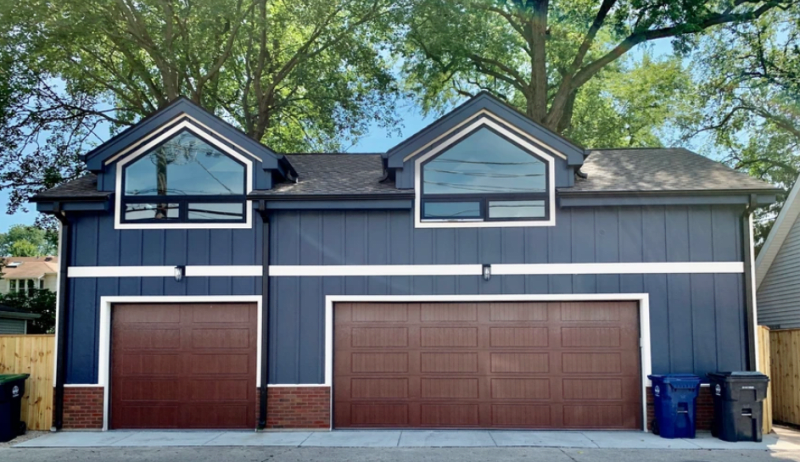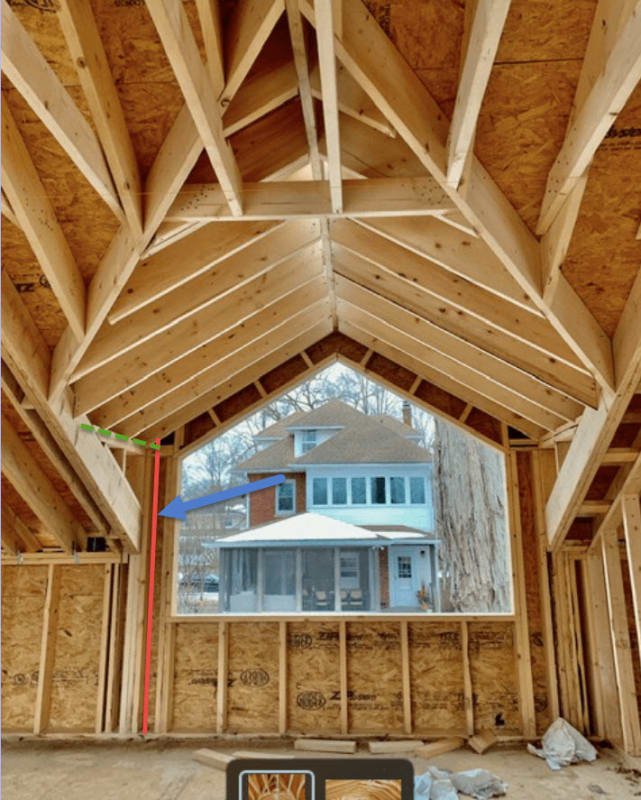A client wants to use triangular windows in a dormer and sent the photos below as an example. The problem is, the ridge isn't direclty supported. Traditional framing rules are that you either need to support the ridge or tie the rafters (if it can't spread, it can't come down). However, I want to at least poke a litter deeper, as we all know, wood structures are fairly redundant. So what is holding this example up:
[ol 1]
[li]As this ridge displaces downward, it will need to push against the roof diaphragm. So the roof diaphragm can resist the thrust of the rafters at the valley portion.[/li]
[li]The wood sheathing. First acting as a cantilever beam (in-plane bending) to help carry the thrust load from the rafters not in the valley back to the roof diaphragm.[/li]
[li]The wood sheathing. Second as a folder plate (out of plane bending of the composite sheathing-rafter member). Essentially the roof wants to act like a folder plate spanning between dormer walls.[/li]
[li]In the framing photo there looks to be a lot of nails in the single tie at the 2nd set of dormer roof rafters. Maybe this is an attempt at some sort of tie at that end.[/li]
[/ol]
So my question are -
[ol 1]
[li]Do any of these factors sell you on putting your name behind this?[/li]
[li]You think it's even possible to model these effects?[/li]
[li]Am I missing something?[/li]
[/ol]
I'm guessing that all the factors above are helping, but ultimately this ridge is going to 'sag' over time and rest on the window. All will likely be fine until you go to replace the window and can't get it out.


[ol 1]
[li]As this ridge displaces downward, it will need to push against the roof diaphragm. So the roof diaphragm can resist the thrust of the rafters at the valley portion.[/li]
[li]The wood sheathing. First acting as a cantilever beam (in-plane bending) to help carry the thrust load from the rafters not in the valley back to the roof diaphragm.[/li]
[li]The wood sheathing. Second as a folder plate (out of plane bending of the composite sheathing-rafter member). Essentially the roof wants to act like a folder plate spanning between dormer walls.[/li]
[li]In the framing photo there looks to be a lot of nails in the single tie at the 2nd set of dormer roof rafters. Maybe this is an attempt at some sort of tie at that end.[/li]
[/ol]
So my question are -
[ol 1]
[li]Do any of these factors sell you on putting your name behind this?[/li]
[li]You think it's even possible to model these effects?[/li]
[li]Am I missing something?[/li]
[/ol]
I'm guessing that all the factors above are helping, but ultimately this ridge is going to 'sag' over time and rest on the window. All will likely be fine until you go to replace the window and can't get it out.



